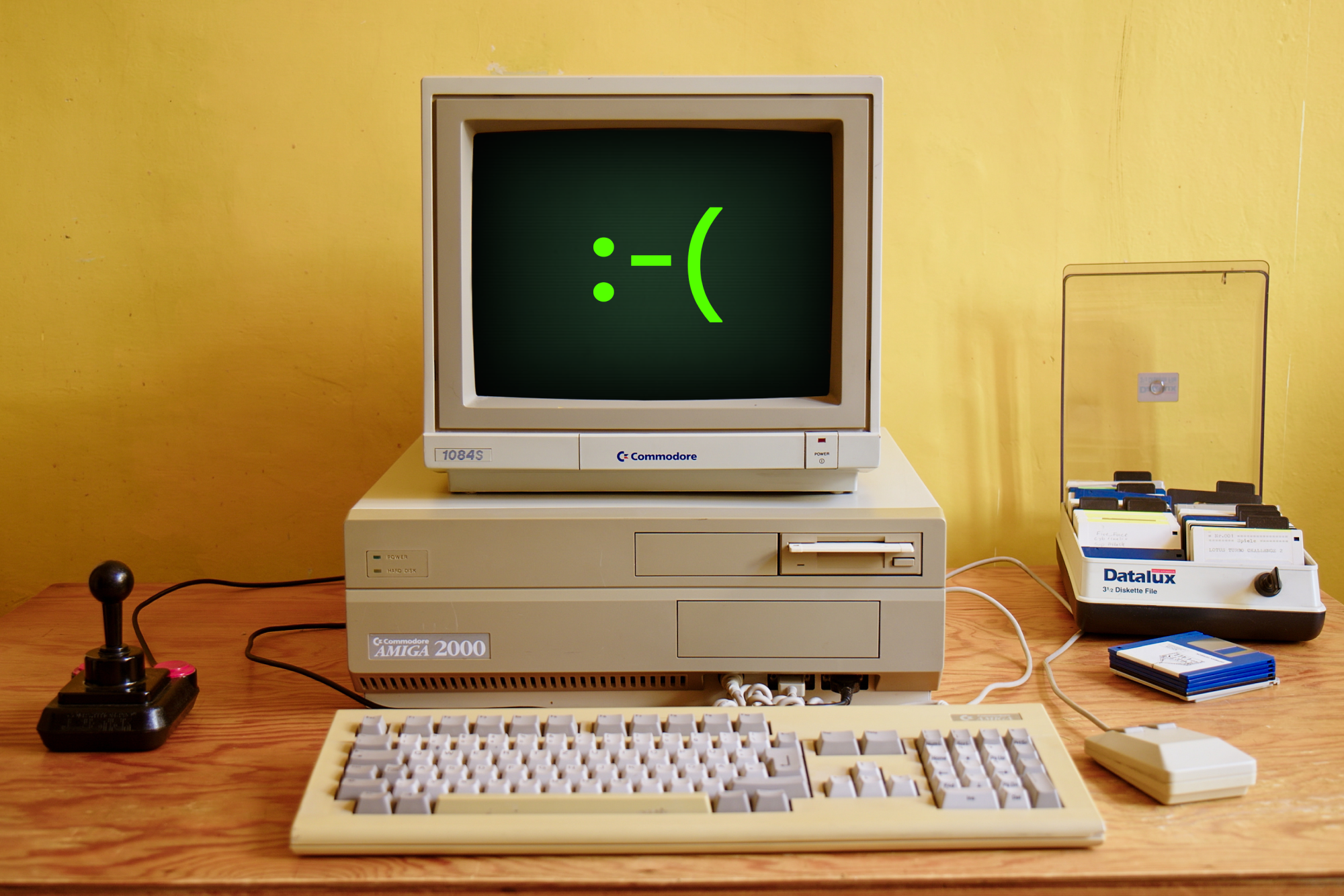I Broke Claude Code’s Will to Live
How the power of my pure nerdery vanquished the mighty AI.

This was the last time computers were good.
Last week, I wrote about how I was trying to burn through some free Claude credits. Since then, I’ve kept a steady stream of projects going, running overnight and while I’m on the train. I’ve continued to see interesting results, but it was hard to spend too many more of those credits without coming up with fake projects. Finally, I hit on a strategy to burn a few hundred dollars fast—and then, doubling down, I made Claude cry uncle.
I know that profligate use of AI is tacky, but I had a real goal: Learning about what’s expensive with these tools is a way to understand where things might go. The classic example is Xerox PARC, where they built powerful graphical personal computers in the 1970s that cost as much as a house. Then they built software for those computers, planning for a future where things would cost 1/10th or 1/100th as much. Apple, of course, licensed Xerox’s tech, used cheaper components, wrote less robust software, then released the Mac. That story, over and over, is how the tech industry tends to go.
While I was almost in a state of shock a week ago, I’ve now started to metabolize some of what I was seeing. Multiple projects ended up in multiple states of brokenness, which was reassuring. Bugs—bad ones—started to appear in various efforts. Phew! It’s not all over yet. You still need to know a lot to make an AI code in a reliable way (unless you use a product like ours!), and at least for now, the last mile is going to be really long unless you’re able to articulate obscure things like: “Is there a way to do the UI with a webview instead of native widgets?” (If you do know your stuff, though, the results are mind-boggling—not backing off from that!)
Want more of this?
The Aboard Newsletter from Paul Ford and Rich Ziade: Weekly insights, emerging trends, and tips on how to navigate the world of AI, software, and your career. Every week, totally free, right in your inbox.
As the clock ticked down, there were $700 of free credits left, and I was feeling kind of annoyed. First, I gave it a lot of old code and asked Claude to improve it in various ways, and it did. I asked it to come up with 500 simple browser game ideas, pick the best ones, convert them to code, write a game engine to test them, and report on its findings. It did, and I still haven’t fully picked apart that mess, and ultimately that cost about $20 and made me feel gross. I tried to clone Aboard, and, thankfully, that failed profoundly—Aboard is all about creating human guidance for AIs, and it can’t synthesize that (yet).
Then I decided to do one of the nerdiest things I’ve ever done: I gave it all of the code from my favorite open-source text editor, Emacs, and asked it to read through that and to write a complete, literate-programming style. I told it to go hard and run in parallel and spin up agents. Emacs is on version 30. Its code base is millions of lines of code, 40 years old, and involves thousands of different checkins.
Here, Claude had to work, and it blew through about $30 in an hour. It looked at all the code, researched on the web, spun up tons of agents, and poked its nose into everything, producing a thorough overview of that software’s vast architecture. Then I doubled down and had it do the same for an open-source synth called Surge, and for the historical code of the operating system Unix. I also had it create historical dossiers of major changes in those code bases, and asked it to explain the context in which those changes arose, and make me big epubs to read on my phone. This tore through about $150, all-in. The results are here, if you’re curious.
Those are already huge code bases—but after that, I decided to really push on the gas. I had it download the source code for both the Firefox browser and the Chrome browser (Chromium). And here I found the limits: It spun for hours, producing cryptic error messages, trying to fetch all the code and failing, and eventually giving up in desperation. Claude said something like, “This would be an enormous undertaking” and pointed out that Chromium is 30 gigabytes and has 20+ million lines of code. It had a definite “please…sir…please…no more” vibe about it. And, in fact, when I went back later to check on that session and grab some quotes for this newsletter, it had erased the sessions. Never happened. No record of the bad times. Best for everyone, I guess.
So I end my trial period or so with about $300 left over, 20 apps in a half-complete state, some amazing progress, and a bunch of weird AI-generated books about code. As to the books’ quality? Well, frankly, as artifacts, they’re great. They’re not literary works; they’re generated documentation, and there’s actually a pretty rich history of that in computing. As a way to deeply understand a highly complex code base, each is clearly worth $30, with one big caveat—my approach utterly skips over drama.
For example, the story of Emacs is filled with open nerd warfare, internecine battles, open hatred, and relentless arguments on mailing lists—and that’s actually a big part of its story. Claude’s infinite positivity tells only a story of progress and hope, and so the whole effort, while producing an incredibly valuable learning tool, is a bit starry-eyed and out of touch. Still, as a big software nerd, it’s great. A very experienced human could do far better given a year, but for the work of a half hour, it’s illuminating.
You can spin up agents galore and do all manner of things, and AI might parallelize quite well—but humans don’t work this way. I certainly don’t. I’d start a project, it would need a half hour to “think,” so I’d upload another. They’d land, and I’d need to debug them. I ended up in a soup of projects, context switching every thirty seconds or so between them in order to keep feeding the robot. It felt like I was grinding in a roleplaying game.
Parallelizing with agents is, in theory, a cheat code, but in practice, it’s taxing and addictive in a non-fun way. This past weekend, I put down the mouse, hugged my kids, and went out for a long bike ride to the beach. Let’s get one project to completion, then move on to the next one, and stop trying to make the bot do everything. It’s fun to go deep for a bit, but now I want to get back to work.


